|
Books Should Be Free Loyal Books Free Public Domain Audiobooks & eBook Downloads |
|
|
Books Should Be Free Loyal Books Free Public Domain Audiobooks & eBook Downloads |
|
Art |
|---|
|
Book type:
Sort by:
View by:
|
By: Joshua Slocum (1844-1910?) | |
|---|---|
 Voyage of the Liberdade
Voyage of the Liberdade
| |
By: Sir Arthur Conan Doyle (1859-1930) | |
|---|---|
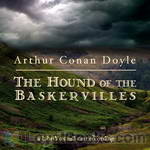 The Hound of the Baskervilles (dramatic reading)
The Hound of the Baskervilles (dramatic reading)
The Hound of the Baskervilles is the third of four crime novels by Sir Arthur Conan Doyle featuring the detective Sherlock Holmes. Originally serialised in The Strand Magazine from August 1901 to April 1902, it is set largely on Dartmoor in Devon in England's West Country and tells the story of an attempted murder inspired by the legend of a fearsome, diabolical hound. | |
By: Walter Crane (1845-1915) | |
|---|---|
 Line and Form (1900)
Line and Form (1900)
| |
 A Floral Fantasy in an Old English Garden
A Floral Fantasy in an Old English Garden
| |
 The Song of Sixpence Picture Book
The Song of Sixpence Picture Book
| |
By: Sir Walter Scott (1771-1832) | |
|---|---|
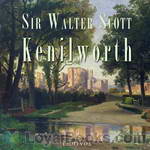 Kenilworth
Kenilworth
An Elizabethan era historical novel by Scotland’s master of fiction, Sir Walter Scott. With a cast of historical and created characters, including the Queen herself, Scott presents the sad history and tragic consequences of the secretive marriage of young Amy Robsart and the Earl of Leicester. (Summary by SK) | |
By: John Kendrick Bangs (1862-1922) | |
|---|---|
 The Pursuit of the House-Boat
The Pursuit of the House-Boat
This sequel to Bangs' A House-Boat on the Styx continues the "thought-experiment" of bringing various historical and fictional figures together, detailing the adventures of the ladies of Hades after they are kidnapped by pirates and the attempts of the Associated Shades (led by Sherlock Holmes) to retrieve their house-boat. (Introduction by Emma Joyce) | |
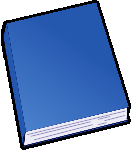 R. Holmes and Co.
R. Holmes and Co.
Raffles Holmes is introduced in these stories as the son of the great Sherlock Holmes. He is also revealed to be the grandson of A.J. Raffles, a gentleman thief pursued by Sherlock Holmes many years earlier. This apparently contradictory family background sets the stage for his colorful and amusing adventures. | |
 The Pursuit of the House-Boat Being Some Further Account of the Divers Doings of the Associated Shades, under the Leadership of Sherlock Holmes, Esq.
The Pursuit of the House-Boat Being Some Further Account of the Divers Doings of the Associated Shades, under the Leadership of Sherlock Holmes, Esq.
| |
By: Charles Morris (1833-1922) | |
|---|---|
 The San Francisco Calamity by Earthquake and Fire
The San Francisco Calamity by Earthquake and Fire
The first half of this book describes the devastating earthquake that hit San Francisco in 1906, and the subsequent destruction caused by fire. Various eyewitnesses and victims give their account on the tragedy. In the second half, a number of different other earthquakes and volcanic eruptions are retold, like the eruption of the Vesuvius that destroyed Pompeij or the explosion of the Krakatoa, together with scientific explanations for the causes of earthquakes and the eruption of volcanos. | |
By: Agnes Ethel Conway (1885-1950) | |
|---|---|
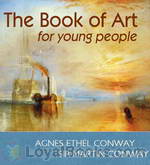 The Book of Art for Young People
The Book of Art for Young People
This is a charming book on Art History for children (and everyone else). Each chapter focuses on a great painting, reproduced in color in the original text. The authors explain the story behind the paintings, as well as the life, times, and techniques of the artists. | |
By: George Manville Fenn (1831-1909) | |
|---|---|
 Nic Revel A White Slave's Adventures in Alligator Land
Nic Revel A White Slave's Adventures in Alligator Land
| |
By: John Foxe (1516-1587) | |
|---|---|
 Fox's Book of Martyrs Or A History of the Lives, Sufferings, and Triumphant Deaths of the Primitive Protestant Martyrs
Fox's Book of Martyrs Or A History of the Lives, Sufferings, and Triumphant Deaths of the Primitive Protestant Martyrs
| |
By: Harry Houdini | |
|---|---|
 The Miracle Mongers, an Exposé,
The Miracle Mongers, an Exposé,
“A complete exposé of the modus operandi of fire eaters, heat resisters, poison eaters, venomous reptile defiers, sword swallowers, human ostriches, strong men, etc.”, [by Harry Houdini, from the subtitle]. | |
By: Joseph Jacobs (1854-1916) | |
|---|---|
 The Story of Geographical Discovery How the World Became Known
The Story of Geographical Discovery How the World Became Known
| |
By: Okakura Kakuzo (1863-1913) | |
|---|---|
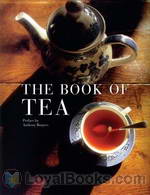 The Book of Tea
The Book of Tea
The Book of Tea was written by Okakura Kakuzo in the early 20th century. It was first published in 1906, and has since been republished many times. – In the book, Kakuzo introduces the term Teaism and how Tea has affected nearly every aspect of Japanese culture, thought, and life. The book is noted to be accessibile to Western audiences because though Kakuzo was born and raised Japanese, he was trained from a young age to speak English; and would speak it all his life, becoming proficient at communicating his thoughts in the Western Mind... | |
By: John Ruskin (1819-1900) | |
|---|---|
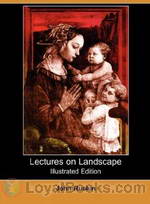 Lectures on Landscape
Lectures on Landscape
A series of lectures on landscape painting delivered at Oxford in 1871, by artist, critic, and social commentator, John Ruskin. | |
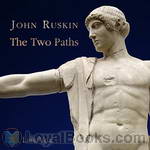 The Two Paths
The Two Paths
"The Two Paths" is a collection of five lectures delivered in 1858 and 1859 by John Ruskin on art and architecture. This is how the author himself presents the book: "The following addresses, though spoken at different times, are intentionally connected in subject; their aim being to set one or two main principles of art in simple light before the general student, and to indicate their practical bearing on modern design. The law which it has been my effort chiefly to illustrate is the dependence of all noble design, in any kind, on the sculpture or painting of Organic Form." The most famous of these, the fifth lecture, is commonly known simply as "The Work of Iron" | |
 The Elements of Drawing In Three Letters to Beginners
The Elements of Drawing In Three Letters to Beginners
| |
 The Stones of Venice, volume 1
The Stones of Venice, volume 1
The Stones of Venice is a three-volume treatise on Venetian art and architecture by English art historian John Ruskin, first published from 1851 to 1853. Intending to prove how the architecture in Venice exemplified the principles he discussed in his earlier work, The Seven Lamps of Architecture, Ruskin examined the city in detail, describing for example over eighty churches. He discusses architecture of Venice's Byzantine, Gothic and Renaissance periods, and provides a general history of the city as well... | |
 Lectures on Architecture and Painting Delivered at Edinburgh in November 1853
Lectures on Architecture and Painting Delivered at Edinburgh in November 1853
| |
 The Poetry of Architecture Or, the Architecture of the Nations of Europe Considered in its Association with Natural Scenery and National Character
The Poetry of Architecture Or, the Architecture of the Nations of Europe Considered in its Association with Natural Scenery and National Character
| |
 Stones of Venice [introductions]
Stones of Venice [introductions]
| |
 Modern Painters, Volume 1 (of 5)
Modern Painters, Volume 1 (of 5)
| |
 Lectures on Art Delivered before the University of Oxford in Hilary term, 1870
Lectures on Art Delivered before the University of Oxford in Hilary term, 1870
| |
 A Joy For Ever (And Its Price in the Market)
A Joy For Ever (And Its Price in the Market)
| |
 The Harbours of England
The Harbours of England
| |
 Ariadne Florentina Six Lectures on Wood and Metal Engraving
Ariadne Florentina Six Lectures on Wood and Metal Engraving
| |
 Giotto and his works in Padua An Explanatory Notice of the Series of Woodcuts Executed for the Arundel Society After the Frescoes in the Arena Chapel
Giotto and his works in Padua An Explanatory Notice of the Series of Woodcuts Executed for the Arundel Society After the Frescoes in the Arena Chapel
| |
 Aratra Pentelici, Seven Lectures on the Elements of Sculpture Given before the University of Oxford in Michaelmas Term, 1870
Aratra Pentelici, Seven Lectures on the Elements of Sculpture Given before the University of Oxford in Michaelmas Term, 1870
| |
 On the Old Road Vol. 1 (of 2) A Collection of Miscellaneous Essays and Articles on Art and Literature
On the Old Road Vol. 1 (of 2) A Collection of Miscellaneous Essays and Articles on Art and Literature
| |
 On the Old Road, Vol. 2 (of 2) A Collection of Miscellaneous Essays and Articles on Art and Literature
On the Old Road, Vol. 2 (of 2) A Collection of Miscellaneous Essays and Articles on Art and Literature
| |